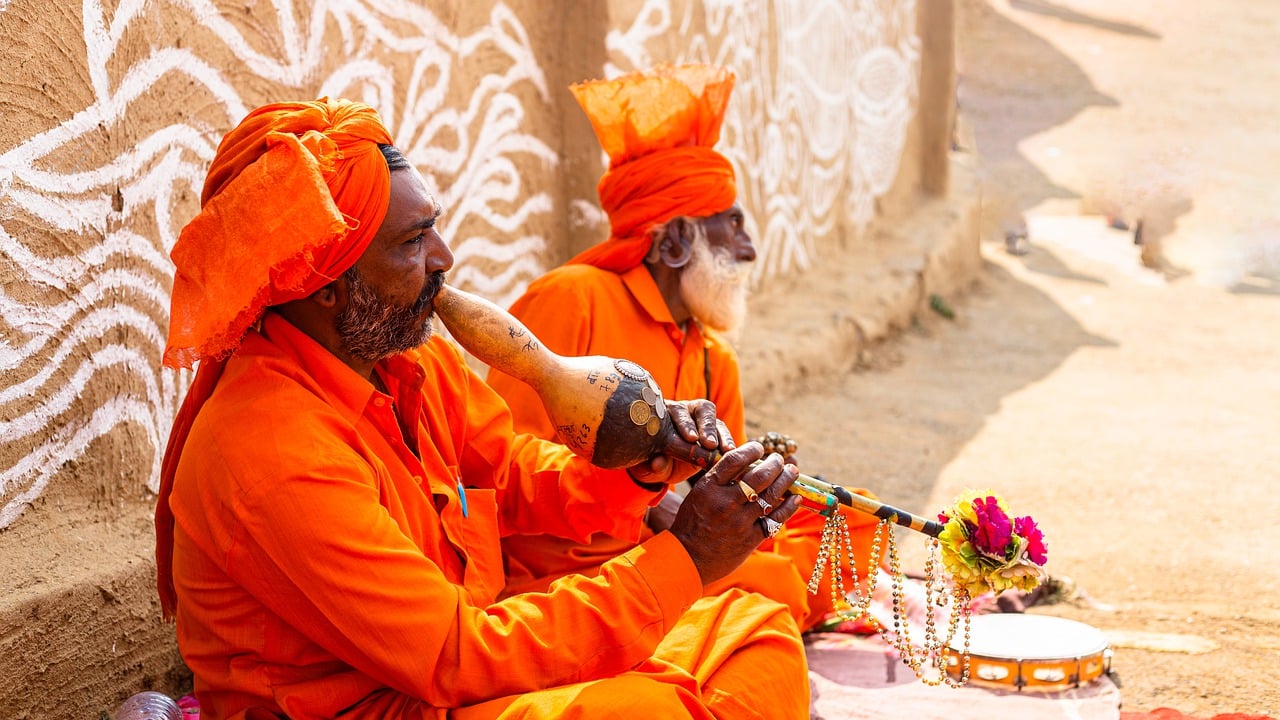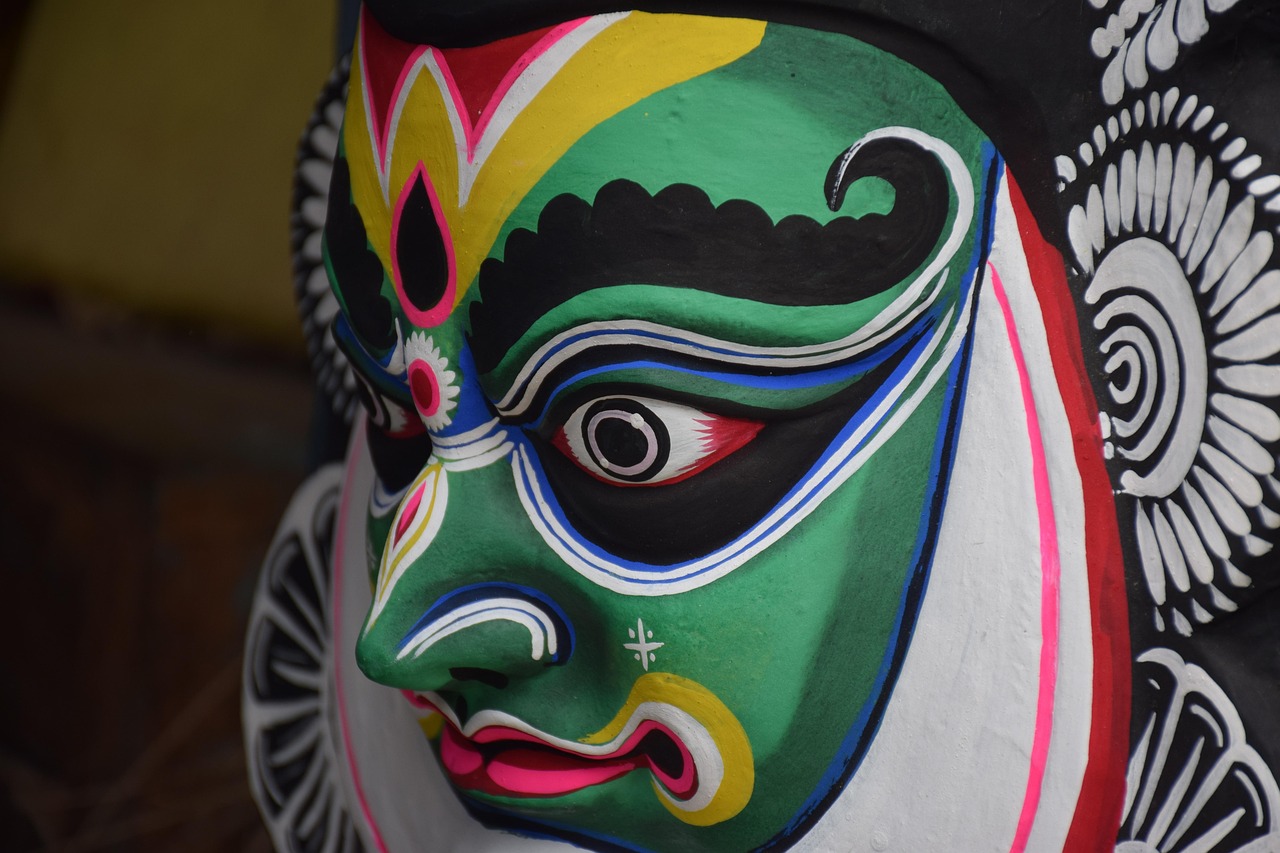This article delves into the rich history and evolution of the Bengali language, tracing its roots, influences, and development over centuries. Understanding its significance in the cultural landscape of Bengal provides insights into the identity and heritage of its speakers.
Origins of the Bengali Language
The Bengali language has a fascinating origin story, emerging from the Indo-Aryan languages as a distinct entity around the 10th century CE. Various linguistic and cultural influences, including Prakrit and regional dialects, played vital roles in shaping its early form.
Influence of Sanskrit on Bengali
Sanskrit has significantly impacted Bengali, contributing to its vocabulary and grammar. Many words in contemporary Bengali can be traced back to Sanskrit, enhancing its literary richness and providing a solid foundation for the language.
Old Bengali Literature
Old Bengali literature, dating back to the 11th century, showcases the language’s early development. Texts from this period reflect the social, cultural, and religious life of the time, illustrating the language’s adaptability.
Religious Texts in Old Bengali
Religious texts, especially those related to Hinduism and Buddhism, were among the earliest forms of Bengali literature. These works highlight the language’s spiritual significance and its integral role in religious practices.
Folk Traditions and Oral Literature
Folk traditions and oral literature have played a crucial role in the preservation and evolution of Bengali. They showcase the language’s connection to the people’s lives and stories, reflecting their experiences and cultural heritage.
Modern Bengali Literature
The transition to modern Bengali literature in the 19th century marked a significant shift. Writers began exploring new themes and styles, reflecting the changing socio-political landscape of Bengal.
Impact of Colonialism on Bengali
Colonial rule profoundly impacted the Bengali language, introducing English vocabulary and leading to a new literary style that blended traditional and modern elements.
Language Movement in Bengal
The Language Movement of the 1950s was pivotal, underscoring the importance of linguistic identity and cultural pride among the Bengali-speaking population.
Globalization and Bengali Today
In the age of globalization, Bengali has continued to evolve, adapting to new technologies and cultural exchanges while maintaining its unique identity and heritage.
The Future of the Bengali Language
Looking ahead, the Bengali language faces both challenges and opportunities. Its potential for growth and revitalization in a rapidly changing world is significant.
Preservation Efforts
Efforts to preserve and promote Bengali are crucial in maintaining its relevance. Educational initiatives, cultural programs, and digital resources are essential for engaging younger generations.
Role of Technology in Language Evolution
Technology plays a significant role in the evolution of Bengali, facilitating communication and fostering new forms of expression through social media, apps, and online platforms.

Origins of the Bengali Language
The Evolution of the Bengali Language: A Historical Perspective
The Bengali language, one of the most spoken languages in the world, has a rich and intricate history that reflects the cultural and social dynamics of the Bengal region. Its journey from the Indo-Aryan languages to a distinct linguistic identity is a fascinating tale that spans over a millennium.
The Bengali language traces its roots back to the Indo-Aryan languages, emerging as a unique linguistic entity around the 10th century CE. This evolution was not merely a matter of linguistic development; it was profoundly influenced by various cultural and historical factors. The region’s diverse interactions with neighboring cultures, trade, and migrations played a significant role in shaping the language.
During this period, Bengali began to differentiate itself, adopting elements from languages such as Sanskrit, Prakrit, and even Arabic and Persian due to the influence of trade and conquests. This amalgamation enriched the vocabulary and grammatical structure of Bengali, allowing it to flourish as a medium of expression for the local populace.
Influence of Sanskrit on Bengali
Sanskrit’s impact on Bengali is particularly noteworthy. Many words and grammatical constructs in Bengali are derived from Sanskrit, contributing to its literary depth. This influence is evident in classical texts and continues to resonate in contemporary literature, where writers draw upon this rich heritage.
Old Bengali Literature
The emergence of Old Bengali literature in the 11th century marked a significant milestone in the language’s evolution. Early texts, often religious in nature, reflect the cultural and spiritual life of the people. These writings not only showcase the linguistic development but also highlight the societal values and beliefs of the time.
Religious Texts and Folk Traditions
- Religious texts in Old Bengali, particularly those related to Hinduism and Buddhism, played a pivotal role in establishing the language’s literary tradition.
- Folk traditions and oral literature further enriched Bengali, preserving the language through storytelling and songs, deeply connecting it to the lives of the people.
As we reflect on the origins of the Bengali language, it becomes clear that its development is a testament to the resilience and adaptability of a culture that has withstood the test of time. The language continues to evolve, embracing modern influences while remaining rooted in its rich historical context.

Influence of Sanskrit on Bengali
The influence of Sanskrit on the Bengali language is profound and multifaceted, serving as a cornerstone for its vocabulary and grammatical structure. Emerging from the ancient Indo-Aryan languages, Bengali began to take shape around the 10th century CE, with Sanskrit playing a pivotal role in its evolution. This connection has not only enriched the language but has also contributed significantly to its literary heritage.
Sanskrit’s impact on Bengali can be observed in several key areas:
- Vocabulary Development: A substantial portion of Bengali vocabulary is derived from Sanskrit, with many words still in common use today. Terms related to religion, philosophy, and science often have their roots in Sanskrit, reflecting the cultural and intellectual exchanges between the two languages.
- Grammatical Structures: The grammatical frameworks of Bengali exhibit influences from Sanskrit, particularly in the use of verb forms and sentence construction. This has helped maintain a level of sophistication and fluidity in the language.
- Literary Richness: The incorporation of Sanskrit has allowed Bengali literature to flourish. Many classical poets and writers drew inspiration from Sanskrit texts, weaving intricate themes and styles that resonate with readers even today.
- Religious and Cultural Significance: Many of the earliest texts in Bengali were translations or adaptations of Sanskrit scriptures, showcasing the language’s role in disseminating spiritual and cultural knowledge.
Furthermore, as Bengali evolved, it adapted and transformed Sanskrit terms to fit its phonetic and cultural context, creating a unique blend that reflects the rich tapestry of Bengal’s history. This ongoing relationship continues to shape the language, ensuring that the legacy of Sanskrit remains a vital part of Bengali identity.
In conclusion, the influence of Sanskrit on Bengali is a testament to the enduring connections between languages and cultures. It highlights how historical interactions can shape a language’s development, contributing to its depth and complexity.
Old Bengali Literature
is a significant aspect of the rich tapestry of Bengali culture, tracing its roots back to the 11th century. This period marks the early development of the Bengali language, showcasing how it began to flourish as a distinct literary medium. The texts from this era provide a glimpse into the social, cultural, and religious life of the time, reflecting the values, beliefs, and experiences of the people.
One of the most notable features of Old Bengali literature is its connection to religious texts. Many of these early works were deeply intertwined with the practices of Hinduism and Buddhism, serving not only as religious scriptures but also as a means of educating the masses. These texts often employed a lyrical style, making them accessible and engaging for the common people.
Additionally, folk traditions played a crucial role in the evolution of Bengali literature. Oral storytelling, songs, and proverbs were vital in preserving the language and its rich heritage. These narratives often conveyed moral lessons, cultural values, and historical events, thus ensuring the continuity of Bengali identity through generations.
As the Bengali language evolved, so did its literary forms. The transition from oral traditions to written texts allowed for greater expression and creativity. Writers began to explore various themes, including love, nature, and social issues, reflecting the changing dynamics of society.
In conclusion, the significance of Old Bengali literature cannot be overstated. It not only marks the beginning of Bengali as a literary language but also serves as a testament to the resilience and creativity of the Bengali people. The exploration of these early texts provides invaluable insights into the cultural and historical context of Bengal, enriching our understanding of its literary heritage.
Religious Texts in Old Bengali
The evolution of Bengali literature is deeply intertwined with its religious heritage. Among the earliest literary works in Bengali, religious texts, particularly those associated with Hinduism and Buddhism, played a pivotal role in shaping the language’s identity and cultural significance. These texts not only served as spiritual guides but also as a means of preserving and transmitting cultural values and traditions.
Dating back to the 11th century, these religious writings were often composed in a language that was accessible to the common people, thereby enhancing the reach of spiritual teachings. The Charyapada, a collection of Buddhist songs, is one of the earliest examples of this literary tradition. It reflects the philosophical and spiritual inquiries of its time, showcasing the richness of Bengali as a medium for profound thought.
- Hindu Religious Texts: Texts such as the Bhagavata Purana and Ramayana were translated and adapted into Bengali, allowing the local population to engage with these important narratives.
- Buddhist Influence: The teachings of Buddha were also translated into Bengali, contributing to the spiritual landscape of Bengal and fostering a unique blend of traditions.
- Spiritual Practices: These texts played a crucial role in rituals and ceremonies, serving as a guide for worship and community gatherings.
Additionally, the use of Bengali in these texts marked a significant departure from the dominance of Sanskrit, making spiritual literature more accessible to the masses. This accessibility not only enriched the language but also fostered a sense of cultural pride among the Bengali-speaking population.
In conclusion, the religious texts of Old Bengali are not merely historical artifacts; they are vital components of the language’s evolution. They reflect the spiritual aspirations of the Bengali people and illustrate how language can serve as a bridge between the divine and the everyday lives of individuals.
Folk Traditions and Oral Literature
are integral components of the Bengali cultural fabric, serving as vital vessels for storytelling and the transmission of knowledge across generations. These traditions have not only preserved the essence of the Bengali language but have also showcased its remarkable adaptability and resilience.
Historically, the oral literature of Bengal has been characterized by a rich tapestry of songs, tales, and folklore that reflect the daily lives, struggles, and aspirations of the Bengali people. This form of literature often draws upon themes of love, nature, and spirituality, allowing the community to connect with their heritage and identity.
One of the most significant aspects of Bengali folk traditions is their ability to evolve over time. As societal norms and values shift, so too do the stories and songs, incorporating contemporary issues while retaining their roots. This dynamic evolution showcases the language’s flexibility and its deep connection to the people’s experiences.
- Storytelling: Traditional storytelling is a communal activity, often performed during festivals and gatherings, where elders pass down tales to younger generations.
- Folk Songs: These songs, often accompanied by traditional instruments, express a wide range of emotions and cultural narratives.
- Rituals and Festivals: Many Bengali festivals are steeped in folk traditions, with rituals that celebrate seasonal changes, agricultural cycles, and religious observances.
Moreover, the preservation of these oral traditions has been crucial in maintaining the linguistic diversity of Bengali. With globalization and urbanization, there is a pressing need to document and promote these practices to ensure that future generations remain connected to their linguistic heritage.
In conclusion, the role of folk traditions and oral literature in the evolution of the Bengali language is profound. By weaving together the past and the present, these cultural expressions not only enrich the language but also strengthen the community’s identity, ensuring that the stories and values of the Bengali people continue to resonate for years to come.
Modern Bengali Literature
represents a transformative era in the literary landscape of Bengal, emerging prominently during the 19th century. This period marked a significant evolution as writers began to delve into themes that resonated with the socio-political changes occurring in the region. The literary scene saw a shift from traditional forms to more innovative styles, reflecting the growing influence of Western thought and the impact of colonial rule.
As Bengal grappled with the complexities of colonialism, writers like Bankim Chandra Chattopadhyay and Rabindranath Tagore became pivotal figures in this literary revolution. Their works not only explored individual identity and social issues but also celebrated the rich cultural heritage of Bengal. The emergence of the novel as a literary form allowed for deep character exploration and intricate storytelling, which became hallmarks of modern Bengali literature.
Moreover, the 19th century witnessed the rise of literary societies and journals that fostered a vibrant exchange of ideas. These platforms enabled writers to critique societal norms and advocate for social reform. The themes of nationalism and cultural pride began to permeate literary works, as authors sought to inspire a sense of unity among the Bengali populace.
In addition to novels and poetry, the period also saw the flourishing of drama and essays, with playwrights like Michael Madhusudan Dutta and essayists contributing to a diverse literary tapestry. This multifaceted approach to literature allowed for a broader exploration of human experiences and societal challenges.
In conclusion, the transition to modern Bengali literature in the 19th century was not merely a shift in literary style but a profound reflection of the changing times. Writers embraced new themes and styles, capturing the essence of a society in flux, and laying the groundwork for future generations of Bengali authors.

Impact of Colonialism on Bengali
The Impact of Colonialism on Bengali
Colonialism has profoundly shaped the trajectory of the Bengali language, influencing its vocabulary, structure, and literary expression. The arrival of British colonial rule in Bengal during the 18th century initiated a complex interplay between traditional Bengali and English, leading to significant linguistic changes.
As English became the medium of administration and education, it began to infiltrate the Bengali lexicon. This influx of English vocabulary introduced new concepts and ideas, particularly in the fields of science, technology, and governance. Many English words were adapted into Bengali, often taking on unique local pronunciations and meanings. This blending of languages not only enriched Bengali but also reflected the sociopolitical dynamics of the time.
The colonial period also saw the emergence of a new literary style that sought to harmonize traditional Bengali forms with modern influences. Writers like Bankim Chandra Chatterjee and Rabindranath Tagore began experimenting with language, incorporating English phrases and themes into their works. This fusion led to the creation of a vibrant literary scene that resonated with contemporary issues, such as identity, nationalism, and social reform.
Moreover, the colonial education system played a crucial role in shaping the perception of the Bengali language. While it promoted English as a language of prestige, it also sparked a renewed interest in Bengali literature and culture. Intellectuals and activists began to advocate for the preservation and promotion of Bengali, culminating in movements that emphasized linguistic pride and cultural identity.
In conclusion, the impact of colonialism on the Bengali language was multifaceted, resulting in a dynamic interplay between tradition and modernity. This evolution not only transformed the language itself but also paved the way for a rich literary heritage that continues to thrive today.
Language Movement in Bengal
The Language Movement in Bengal was a significant chapter in the struggle for cultural identity and linguistic rights among the Bengali-speaking populace. This movement, which gained momentum in the early 1950s, was not merely a political endeavor but rather a profound assertion of linguistic identity and cultural pride.
At its core, the Language Movement emerged in response to the imposition of Urdu as the sole national language of Pakistan, which marginalized the Bengali language and its speakers. This decision ignited widespread protests among the Bengali people, who felt that their linguistic heritage was under threat. The movement culminated in a series of demonstrations, with the most notable event occurring on February 21, 1952, when students and activists took to the streets of Dhaka to demand recognition of Bengali as an official language.
The protests were met with violent repression, resulting in the tragic deaths of several students. This incident not only galvanized the Bengali population but also highlighted the significance of language as a marker of identity. The sacrifices made during this period are commemorated annually on Language Martyrs’ Day, a day that serves as a reminder of the struggle for linguistic rights and cultural recognition.
The Language Movement ultimately succeeded in achieving its goal, leading to the recognition of Bengali as one of the official languages of Pakistan in 1956. This victory was pivotal, as it fostered a sense of unity among the Bengali people, reinforcing their cultural identity and pride in their language.
In conclusion, the Language Movement of the 1950s was a defining moment in the history of Bengal, underscoring the importance of linguistic identity in shaping cultural consciousness. It serves as a powerful reminder of the role language plays in the lives of individuals and communities, influencing their sense of belonging and identity.
Globalization and Bengali Today
In the contemporary world, globalization has significantly influenced numerous languages, and Bengali is no exception. As the world becomes increasingly interconnected, the Bengali language has shown remarkable resilience and adaptability, evolving to incorporate new elements while preserving its rich heritage.
With the advent of technology, Bengali speakers have found innovative ways to communicate and express themselves. The rise of social media platforms, mobile applications, and digital content has allowed for the rapid dissemination of the language across the globe. This has not only facilitated communication among speakers but has also introduced Bengali to a wider audience, fostering a sense of community among the diaspora.
Moreover, the influence of cultural exchanges cannot be overlooked. As Bengali communities engage with various cultures, the language absorbs new words and expressions, enriching its vocabulary. This dynamic interaction enhances the language’s relevance in a global context, ensuring it remains vibrant and engaging for younger generations.
Despite these changes, Bengali retains its unique identity. The language’s deep roots in literature, music, and art continue to flourish, showcasing the richness of Bengali culture. Events such as Pohela Boishakh (Bengali New Year) and Durga Puja serve as cultural touchstones that reinforce the community’s connection to its linguistic heritage.
In conclusion, the Bengali language stands as a testament to the power of adaptation in the face of globalization. By embracing new technologies and cultural influences while steadfastly honoring its traditions, Bengali not only survives but thrives in the modern world. The future looks promising as the language continues to evolve, ensuring its place in the global linguistic landscape.

The Future of the Bengali Language
As we look toward the future, the Bengali language stands at a crossroads, facing both significant challenges and remarkable opportunities. The potential for growth and revitalization is palpable in this rapidly changing world, where cultural and technological shifts are reshaping linguistic landscapes.
Challenges Ahead
- Globalization: The influence of global languages, particularly English, poses a challenge to the preservation of Bengali. As younger generations are exposed to international media, there is a risk of diminishing usage and fluency in their native tongue.
- Urbanization: Rapid urban migration often leads to linguistic dilution as people from different regions interact. This amalgamation can sometimes overshadow the rich dialects and variations of Bengali.
Opportunities for Growth
- Digital Platforms: The rise of technology offers new avenues for the Bengali language to thrive. Social media, mobile applications, and online content creation enable speakers to connect and engage in their native language.
- Educational Initiatives: Increased focus on bilingual education and the promotion of Bengali in schools can foster a sense of pride and identity among young learners.
Revitalization Efforts
To ensure the longevity of the Bengali language, various organizations and communities are actively working on preservation efforts. This includes creating digital resources, organizing cultural programs, and encouraging the use of Bengali in literature and arts.
Conclusion
In conclusion, while the Bengali language faces undeniable challenges in a globalized world, the opportunities for revitalization and growth are equally significant. By embracing technology and fostering educational initiatives, the future of Bengali can be bright and vibrant, ensuring that this rich linguistic heritage continues to flourish.
Preservation Efforts
The preservation and promotion of the Bengali language are vital for maintaining its relevance in the modern world. As a language rich in history and culture, Bengali faces challenges that require concerted efforts to ensure its survival and growth. Various initiatives aim to engage younger generations and foster a sense of pride in their linguistic heritage.
Educational Initiatives
- Schools and universities have implemented Bengali language programs that emphasize literature, history, and cultural significance.
- Workshops and seminars are organized to enhance teaching methodologies, ensuring that educators can effectively engage students.
Cultural Programs
- Festivals celebrating Bengali literature and arts are held regularly, providing a platform for local artists and writers.
- Community events, such as poetry readings and storytelling sessions, encourage participation and interest among the youth.
Digital Resources
- The rise of technology has led to the creation of apps and online platforms that offer interactive learning experiences.
- Social media campaigns promote Bengali content, making the language more accessible and relatable to younger audiences.
Engagement with Younger Generations
To effectively engage younger generations, it is essential to integrate Bengali into popular culture. This can be achieved through:
- Incorporating Bengali language into video games, music, and films.
- Encouraging the use of Bengali in social media and online communities.
In conclusion, the combined efforts of educational initiatives, cultural programs, and digital resources play a crucial role in preserving the Bengali language. By actively engaging younger generations, we can ensure that this beautiful language continues to thrive and evolve in the years to come.
Role of Technology in Language Evolution
The impact of technology on the Bengali language has been profound and multifaceted. In today’s digital age, technology serves not only as a tool for communication but also as a catalyst for cultural expression and linguistic evolution.
Facilitating Communication
With the advent of social media platforms, messaging apps, and online forums, the Bengali-speaking community has found new avenues to connect. These platforms allow users to share thoughts, stories, and experiences in their native language, fostering a sense of belonging and community. This digital interaction has led to the emergence of new slang, abbreviations, and even emojis that resonate with the cultural nuances of the Bengali language.
Fostering New Forms of Expression
Technology has also opened doors for creative expression. Bengali artists, writers, and musicians are now able to reach global audiences through platforms like YouTube, Instagram, and blogs. This exposure not only promotes the Bengali language but also encourages the blending of traditional and modern artistic forms, enriching the language’s literary landscape.
Language Learning and Preservation
Online language courses, mobile applications, and digital resources have made learning Bengali more accessible than ever. These tools cater to both native speakers and those interested in learning the language, promoting its preservation among younger generations. Educational initiatives leverage technology to engage users through interactive lessons, quizzes, and multimedia content.
Conclusion
As technology continues to advance, its role in the evolution of the Bengali language will only grow. By facilitating communication, fostering creativity, and enhancing learning opportunities, technology is not just shaping the way Bengali is used today but also ensuring its relevance for future generations.
Frequently Asked Questions
- What is the origin of the Bengali language?
The Bengali language originated from the Indo-Aryan languages around the 10th century CE. It developed as a distinct entity influenced by various cultural and linguistic factors over centuries.
- How has Sanskrit influenced Bengali?
Sanskrit has significantly shaped the vocabulary and grammar of Bengali, enriching its literary tradition and providing a foundation for many words still in use today.
- What role did religious texts play in early Bengali literature?
Religious texts, especially those related to Hinduism and Buddhism, were among the earliest forms of Bengali literature, highlighting the language’s spiritual significance and its role in religious practices.
- How did colonialism affect the Bengali language?
Colonial rule introduced English vocabulary into Bengali and led to the development of a new literary style that blended traditional elements with modern influences, reshaping the language.
- What was the Language Movement in Bengal?
The Language Movement of the 1950s was a crucial moment in Bengali history, emphasizing the importance of linguistic identity and cultural pride among Bengali speakers.
- What are the current challenges faced by the Bengali language?
The Bengali language faces challenges such as globalization and the influence of technology, but it also has opportunities for growth and revitalization through educational and cultural initiatives.



























































